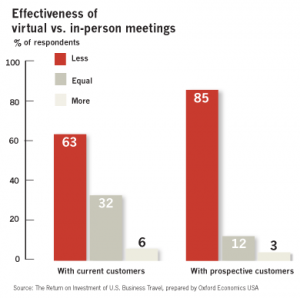Erik Qualman's Blog, page 579
November 19, 2014
Protecting Yourself Against Social Media Security Threats

The lives of internet users have become interactive and more interconnected over time. While the web provides several channels for us to maintain relationships and create discussions every day, the rise of social networking sites have made it even easier to do so.
Unfortunately, with millions of people online, social media sites not only attract family and friends, but they also attract cyber criminals. As a result, social networks are becoming vehicles for malicious attacks, data leaks and privacy breaches.
Further, the applications on social networking sites increase security threats because most social media users run these applications without thinking twice. Attackers may be able to host customized applications that appear as innocent but infect your PC and share your account content without first gaining consent.
According to the 2013 Annual Security Report published by Cisco, the highest concentration of online threats are on sites with mass audiences, like social media. The report states that online ads are 182 times more likely to be used by cyber criminals to deliver malicious content than sites that host pornographic content, for example.
The following are some of the most common security threats social network users’ face today:
Social engineering: Cyber criminals increasingly attack social platforms to access content about user business activities, location, contacts to perform real world or virtual crimes. Social engineering is a popular method that tricks users into revealing authentication credentials or personal data. This attack can be a request to modify your password, but instead will steal your password to collect personal information from your account.
Phishing: This is where you are sent an email to sign into Facebook, Twitter or another site, but the URL to sign up is actually redirecting to a malicious site. Many Facebook users have been a victim of this attack; the primary reason is that users don’t pay a lot of attention when they receive a link via email. Phishing attacks are also conducted via social media chat functions to lure users into opening their bank accounts and other important accounts.
Botnets: Social accounts can be used as a command and control channel for botnets. The standard is IRC, but some have come to using social networks. With the ease of access of infected machines to social accounts by creating fake IDs, the trend is likely to continue.
APT (Advanced persistent threats): This involves gathering intelligence of targeted individuals, and social media profiles can be a goldmine for the data. The resulting information can be used to conduct further attacks and cause the breach of individual privacy as well as leak of sensitive information.
Safeguarding yourself against these attacks
While social networks often list best practices and policies to help their users from becoming victims of such attacks, the following are additional measures that can be taken to ensure greater safety:
Install an advanced antivirus software: Look for an antivirus for Mac, PCs and mobile devices that can scan privacy settings on Facebook, LinkedIn, Google+ and other social networks to block privacy breach attempts. And some solutions also include a secure browser for safe browsing when opening links received via social networks or email.
Enable two-factor authentication: Many popular social networks have introduced two-factor authentication, which is a great way to protect your account from unauthorized access. In two-factor authentication, whenever someone logs in to your account, it will prompt a message asking for a code sent to your mobile number. Without entering this code, it is impossible to log in to the account even if the password is right.
Be careful of strangers: Social networks makes impersonation pretty easy as cyber criminals can misrepresent their identities to gain access to accounts of innocent victims. When strangers contact you, be careful of the amount of information you reveal. Read guidelines on using Instant Messaging and Chat Rooms Safely. Don’t believe everything you read on social networks as cyber criminals may deliberately post false information.
[image error]
Why Every Business Should Have a Facebook Presence

With over 400 million users (and counting!), Facebook is the largest social media network the world has ever seen. Forget about Myspace, Twitter, and Google+, if you’re only going to use one social media website to advertise your company, Facebook should be the one. If you’re still not convinced, or don’t know how to create a Facebook page, keep reading. This article will explain why your business needs a Facebook presence, and how easy it is to create one.
Photo by Marco Paköeningrat
1. Large User Base
Not only does Facebook have a large user base, but it also has over 100 million American members. If you run an American company, just think of the amount of people that you could potentially be advertising to. Ever heard of the immensely popular TV show American Idol? Well, that receives around 20 million viewers per week. Facebook has five times that amount of users! And, with the average Facebook user spending around 55 minutes per day on the website, you have more time than most every other advertising medium to grab their attention.
2. The Facebook Fan Box
Ever visited a website and seen a little blue Facebook box with a lot of pictures underneath it? This is the Facebook Fan Box, and it can be easily installed onto any website. The benefit of this is that potential customers can easily ‘like’ your Facebook page without even having to be logged into the social media site. And, once they have, they will see all of the advertisements and posts that you publish on your page. Facebook has made strides to make interaction easy, and this is one of the major plusses of the site.
3. It’s Easy to Set Up
A Facebook business page can be set up within minutes. In fact, Facebook will even guide you through the process step by step. Once your basic page has been set up, you can add your logo and cover photo, add details about your company like your location and opening hours, and even enable more than one person to monitor and post to the page. So long as you already have a cover photo and logo ready to upload, you should be able to set up your page within half an hour! There’s really no excuse not to have one in his day and age.
4. Marketing Opportunities are Never Ending
The average Facebook users has 130 friends. So, imagine you impress one user with a post or product on your website. If they like it enough, they may share it. That’s 130 new people that are finding out about your brand without you needing to do anything. If any of those 130 people also like your page, your potential customer base will continue to increase. Once you have attracted people to like your page, you can talk to them instantly about new products and new services. You can announce competitions that will get more people talking about your brand. And, you can respond to feedback in real time.
Facebook really should not be underestimated as a marketing tool. With over 350 million active users, it should be your first port of call when starting a social media campaign.
[image error]
Love and Hate: The Pumpkin-Obsessed People Speak

Just because Halloween is over and Christmas sections are popping up in every retail store doesn’t mean that pumpkin season is over. Pumpkins are a Thanksgiving staple and people can’t seem to get enough of this fall flavor. Microsoft Social Listening has been tracking our nation’s love/hate obsession with the taste of pumpkin through social media conversations and they visualized their findings in the infographic below. For each pumpkin product they show which social platform is hosting these conversations, the overall sentiment, which states are doing the most talking, and share of voice.
Via Column Five for Microsoft Social Listening
The mother of all pumpkin flavors, the pumpkin pie is most talked about in the blogosphere with a mostly 24.1% positive sentiment. Among dessert-lovers, pumpkin scones are getting the most love with a positive sentiment of 36.9% and pumpkin cookies are not making the cut with an 80% negative sentiment. Pumpkin beer has become more talked about than the Pumpkin Spice Latte that started this craze. Gingerbread and peppermint are right on pumpkin’s tail and will soon be replacing all of the pumpkin products on the shelves, so be sure to get your fill while it lasts. Keep calm and pumpkin on!
[image error]
November 17, 2014
How Social Media Is Changing Prime Time TV

It’s easy to talk about how social media is changing the world. What’s harder to put into words is how social media has changed us. Billions of people fill their minutes (which add up into hours) with Facebook, Twitter, YouTube, Instagram, Snapchat, LinkedIn, Pinterest and Vine. But is social media a pastime? Or is it now a fully integrated part of our lives, impacting much more than simply how we interact with technology. A study commissioned by Nokia revealed that the average user checks their smartphone about 150 times each day – and chances are that average user is checking for new updates on their social feeds.
On one hand, we now have more control than ever before over what we consume when it comes to media because we manage our own information networks. Don’t like one take on a particular issue? You can all but banish it from your life. On the other, social media has the potential to broaden a person’s perspective to a near infinite degree. A teen in the US can be friends with a Finnish businessperson. Stock market stories can make their way into a Hell’s Angel’s feed. Each of us is in the driver’s seat – most of the time, that is.
Network television is something of a holdout when it comes to social media. Radio has always been influenced by consumers (think about song requests and call-in talk shows), and as fast as people got used to streaming audio the stations were posting their content for anytime, anywhere listening and sharing, too. Print media is still finding its niche but for the most part, social networks are designed around the written word. Network TV has up until now existed as its own animal, but with the skyrocketing popularity of streaming video something had to give or prime time was going to go extinct.
That hasn’t happened, obviously. The networks are ultimately embracing the “second screen” and recognizing in many cases that the second screen has become the first screen. TV 2.0 as it’s called isn’t a device but rather a way networks (and advertisers) are changing programming and advertising thanks to the social experience empowered by the Internet. First, TV 2.0 acknowledges that people want what they want when they want it. More networks are delivering full episodes of prime time shows via free streaming. Second, it promotes even more social engagement. What promo or ad doesn’t have a hashtag these days? Once upon a time, we talked about our favorite shows with a couple of friends. Now we can talk about them with a couple thousand friends. And finally, TV 2.0 is interactive. When you’re watching on a tablet or phone you can click on an ad for more information or click through to a show’s site directly from a promo.
Television is getting smarter because it has to. We’re already living the smart life with hundreds of synchronous experiences that link our social lives with our social media on any given day. Beamly is the first notable player on the social TV scene – with it, users can follow shows, celebrities, and users; make recommendations and ratings; and chat about what’s on. Chances are it won’t be the last as the networks scramble to figure out what exactly they need to do to compete with the original content now being released by Netflix and Hulu.
However television evolves from this point forward, one thing will remain the same. Prime time used to control our schedules; now to a growing extent, we control prime time.
[image error]
Picture Better Marketing with Social Media

 Whether you are a large company or one of the countless mom and pop shops that dot the nation in all 50 states, marketing your brand correctly is as important as anything else on your to-do list.
Whether you are a large company or one of the countless mom and pop shops that dot the nation in all 50 states, marketing your brand correctly is as important as anything else on your to-do list.
With proper marketing, you enhance the chances of standing out from your competition, building a following of trusted customers, and increasing your revenue stream over time.
With that being said, what are some of the best ways to market your brand as the year winds down and 2015 appears on the horizon?
Socializing Can’t Hurt Your Business
As more companies are quickly discovering, social media is a wonderful and basically free marketing tool that should be used as much as possible.
While you certainly might end up paying an in-house employee or employees are an outsourcing firm to manage your social media, the costs oftentimes are well worth it. Companies and organizations from satellite TV providers like DirectTV to the top multi-product retailers like Target and Walmart to professional sports teams, all engage in social media and what it has to offer.
Followers and Friends Keep Growing
A company like DirectTV has some 157,000 Twitter followers and more than 4 million likes on its Facebook page.
Meantime, Target and Walmart get some 1.46 million and 603,000 followers, respectively on their Twitter pages.
In the world of professional sports, the New York Yankees have around 1.26 million Twitter followers.
In order to maximize your social media marketing efforts, make sure you practice:
Consistency – An effective social media campaign involves being consistent. If your social media efforts are hit and miss, you won’t build up a regular stream of visitors. Make sure you tweet, share, pin etc. on a regular basis;
Targeting – While it looks great to have a ton of followers and friends to your respective social media pages, quality over quantity is the key. Even though you may have so many of them that you don’t have time to single them all out, do periodic reviews (cleansings if you will) and remove followers/friends that really serve no purpose to you. While not everyone needs to be a potential sale, you do want a large percentage of relevant social followers to your respective pages;
Non-confrontation – From time to time, current and potential customers might try and use your social pages as a way to reach out and confront your business. DO NOT use your social pages as firing grounds for public disputes. Not only is this a waste of time, it makes you look unprofessional. Any disputes should be handled out of the public eye;
Reviewing – Lastly, review your social media efforts periodically to zone-in on what is and isn’t working. Some companies put together social pages, then all but tune out their interest in them, possibly thinking they run themselves. If you personally don’t have the time to tend to your social pages, find those who will for you, allowing your marketing to gain more footing.
Photo credit: Image courtesy of KROMKRATHOG at FreeDigitalPhotos.net
[image error]
November 14, 2014
Meetings in Person vs. Meetings Online

2014 has upheld the common affirmation that technology is used for anything and everything in our day-to-day routine. This includes using the net as a source of information, entertainment and communication. Something which is talked about less often are the problems of technology and communication being used in unison. Due to technology’s high regard in relation to time efficiency and versatility, it is rarely discussed how issues can arise when these two are operated in means of one another, especially in the realm of business.
In regards to online communication, one prominent issue exists when a computer or other mobile technology device becomes the middleman in a conversation between two or more people. A computer of any type lacks some of the vital aspects of communication – the chief of these being tone of voice and body language. An all-important human element is missing, which can be more important than you think when it comes to business. Winning clients, presenting strategy plans to existing clients or to other members on your team all require a certain level of originality, which may be the difference between a real success of your intended message, or the utter failure of it. When attempting to convey a message of such importance through an email for example, misunderstandings can often occur. When surveyed, a group of business communicators believed that almost 90% of their recipients would be able to fully comprehend the tone and meaning of their messages. In reality however, only 37% understood the initial intent of the sender. From these figures, you can understand why it is in the best interests of every business owner to encourage face-to-face communication whenever possible, rather than promoting online methods. This will help inspire confidence within the company, as employees will not have to rely on hiding behind a computer screen all day, and can learn to channel their individual charisma which got them their job in the first place.
Despite the convenience of software like Skype and other video call programs, nothing beats the importance of face-to-face meetings. You can make more of an impression when you meet someone in the flesh. You can add the human element that may be a deal maker or breaker. Building a business relationship of a high calibre can be achieved more efficiently and successfully in person. Conversation can slip into parenting tips, or favourite sports teams more naturally than it could over written dialogue. From the perspective of a business owner, you can properly meet a prospective client and make a more informed decision of whether you would like to work with them or not. The same principal applies internally as well. There is little point running a large company or corporation if none of your employees work as part of one main team. Bringing people of similar departments or job descriptions together can really help lift team and company morale, by really emphasising the importance of working as a team, and reinforcing that the name at the other end of an email is a real person with similar characteristics and abilities to themselves. Central London venue hire is always an option when it comes to bringing people together. Making the effort to bring the entire company together rather than setting up a Google Hangout can really go a long way. One central location can limit the stress of travelling and if tied in with a company-related holiday or event which is can be a great opportunity for team bonding. Even though technology itself will be the main way of communicating this event, it will play no further part in building these invaluable bonds once at the event.
A study has shown that if a company abolished its business travel budget, corporate profits would drop 17% in the first year. Landing new business requires a physical handshake rather than tedious language in an overworked and overthought about email.At the end of the day, due to our absolute reliance on technology in our heavily digital age, it has become almost second nature to ping over an email rather than picking up the phone and arranging a real meeting. Getting back to basics can really do a company a world of good, after all you never know what will arise when you just ha
chat with someone.
[image error]
Why Social Networking Can Make Your Home Best Prepared for Winter

 We all know social media is used for networking, possibly landing your dream job, connecting with friends from your past, discovering the best trendy new item and finding a deal, but did you know that social media can also be used when it comes to maintaining your home?
We all know social media is used for networking, possibly landing your dream job, connecting with friends from your past, discovering the best trendy new item and finding a deal, but did you know that social media can also be used when it comes to maintaining your home?
In the United States, 65 percent of people own their own home.
With winter around the corner, homeowners need to make sure their homes are in tip-top condition for the arrival of cold weather, snow storms and ice.
Roofs and shingles should be checked, gutters and chimneys need to be cleaned and secured, windows and doors should be caulked and sealed properly and heaters should be checked and tuned.
Fortunately, social media can help you save money on all of these items.
Investing in Your Home for the Future
According to the article “Gutters and gutter guards: How much can you save?,” homeowners look to do projects and maintenance tasks that will yield them a return on their investment. If they put $100 dollars into their homes, will they get that much (or more) back?
The article says there’s another way to look at that though – what are the costs of improving your home in relation to not undertaking a huge project down the line? With gutters, for example, it is much more cost efficient to clean them regularly (two to three times per year) than it would be to pay for repairs down the road.
Whether you’re in need of gutter cleaning, window caulking or heater repair, social media can help.
Three ways to save money with social media include:
Ask friends on Facebook for recommendations – When it comes to home maintenance and handyman work, you can count on great referrals to make sure the job is done right. Ask friends on Facebook if they recommend anyone that is very affordable or perhaps is running a winter special. You can take this one step further by then liking and following the companies that were recommended to you. If the work doesn’t need to be done immediately, you can keep an eye out for when companies are offering discounts.
Utilize Pinterest – Pinterest is home to beautiful photos featuring everything from homemade recipes to DIY tutorials on projects around the house. If the project isn’t dangerous or too time-consuming, perhaps you’re willing to do it yourself. Poke around on Pinterest and watch a few step-by-step tutorials on how to maintain your own home. There’s a good chance you’ll be able to do at least a few of the things yourself and can save hundreds of dollars.
Reach out on Twitter – Twitter is another extremely popular social media tool. Like Facebook, you can ask your Twitter followers for handyman recommendations in your area. You can search for coupons (using hashtag coupons) and see if any of the recommended companies are offering deals. Make sure to follow whoever is recommended to you, too, as that will allow you to get a better understanding of the company and exactly what services they offer.
Social media is no longer just used for reconnecting with old friends; it’s used in everyday life in everything from saving money to maintaining your home.
Photo credit: Image courtesy of artur84 at FreeDigitalPhotos.net
[image error]
Dentist’s Drill Home Importance of Social Media

 With schedules getting busier and days getting shorter, it’s easy to forget about keeping up with dental care.
With schedules getting busier and days getting shorter, it’s easy to forget about keeping up with dental care.
That’s why more and more dentists are turning to social media to get the word out about cleanings and other dental checkups.
Here are just a few ways dentists are looking out for your teeth by spreading the word about dental care on social media:
Teaching Social Audiences About Dental Care
Dentists are going the social route to keep customers like you and the general public up to date about proper dental health. Most people think dental health only involves brushing and flossing, but there is much more to that bright white smile than you might think.
Dental professionals are using sites like Facebook and Twitter to inform audiences on everything from flossing tips to brushing techniques.
The dental community is also using social sites to answer questions concerning their patients’ cavity concerns and gum health.
Customer Outreach
Social media is a great way to stay connected to just about everyone in your life, including your dentist.
Whether you have questions about your recent checkup or you just need advice about which dental hygiene products to buy, dentists are getting social with their customer care and outreach.
Chances are your local dentist already has a Facebook fan page.
By following your dentist’s fan page, you can ask questions about your dental health and get tips on dental care while in between checkups.
Social media makes dentistry a more customer centric practice, which is great news for you and your teeth.
Informing Parents
As the following article shows, taking care of your own teeth is important, but caring for your child’s teeth is a top priority.
Not only do children neglect to brush and floss regularly, they also eat more sweets and sugary snacks than adults, which make them more susceptible to cavities and tooth decay.
Because of this, dentists are making it a point to inform parents about the importance of their children’s dental care on social media.
By posting brushing tips and links to sugar-free snacks, the dental community is helping parents like you avoid dental issues with their children.
Sending Checkup Reminders
Dentists are using social media as a way to keep their patients’ schedules on track.
If you’ve ever missed a dental checkup, then you already know how easy they are to forget. With 6 months to a year between visits, doctors know they have to keep the reminders coming.
Instead of making phone calls, many dentists are using Facebook and other social sites to remind their patients about checkups.
Considering you probably spend a good amount of time socially surfing, checkup reminders on your favorite social sites put your dental responsibilities front and center.
Benefits for Dentists
When your dentist uses social media, it benefits their dental practice as well as your teeth.
By having an active social presence, dental professionals are able to build relationships with patients as well as generate more referrals and attract new customers through word of mouth. In other words, social media makes dentistry easier for you and your dentist.
From dental information to customer outreach, social media and dentists are helping to make your smile that much brighter.
Photo credit: Image courtesy of photostock at FreeDigitalPhotos.net
[image error]
Facebook Facing Off with Google in Online Advertising

Since the inception of online advertising, Google has comfortably held the number one position in terms of effectiveness and total advertising dollars in the digital ad marketplace. Never content to play second fiddle, Facebook has recently announced a full-frontal assault on Google with its recent acquisition and re-launch of Atlas, an advertising platform developed by Microsoft that has been dismantled and rebuilt as a viable competitor to AdWords.
Google and Facebook hold first and second place, respectively, in the $140 billion digital ad market. However, the gap between one and two is vast, with Google holding three times the market share of Facebook.
In the last two years, however, Facebook has been closing that gap thanks to its capture of the mobile ad segment. Each platform makes the bulk of its revenue selling inventory on its own properties, though Google has made a significant impact with its publisher ad networks. The launch of the new-and-improved Atlas will position Facebook to close in on Google’s stronghold, allowing advertisers to access Facebook users outside of the social network’s main site.
Why Should Google Be Concerned
In order to elbow its way closer to Google, Facebook will use the terabytes of data that it has collected from its 1.3 billion users, information that those users have shared willingly and freely with the social network over the years. Ads will be specifically tailored for each user based upon demographics and interests.
Calling this approach “people-based marketing,” Erik Johnson, the head of Atlas stated in a recent release that Atlas will help marketers “reach real people across devices, platforms and publishers. By doing this, marketers can easily solve the cross-device problem through targeting, serving and measuring across devices.”
Additionally, Atlas will be able to connect online campaigns and offline sales, allowing marketers to accurately measure the ROI and the effectiveness of ad campaigns on revenue.
The key to Atlas’s proposed success is three-fold.
First, hyper-targeting based upon relevancy cues will allow advertisers to market only to those consumers likely to make a purchase, unlike Google AdWords which displays ad copy based upon tracking cookies and keyword relevancy.
Second, Atlas will be able to maintain consistency across mobile platforms. Traditional ad networks and remarketing efforts rely on cookies, which don’t work on mobile devices and are ineffective when it comes to accurate targeting and measurement.
Third, Atlas promises to deliver the Holy Grail of digital marketing – connecting online advertising to offline purchasing.
Complex Data, Simple Processes
Facebook plans on serving Atlas to marketers on an easy-to-use platform. Currently, Google advertisers must seek out professionals who are highly skilled and often certified in managing and measuring the effectiveness of Google AdWords. Atlas, on the other hand, will give marketers the ability to target specific users with a straightforward process. Advertisers will have a clear concept of precisely where their ads will appear, and they will have access to supporting data surrounding expectations for success.
With a Google AdWords campaign, marketers aim for the most clicks, and then they must analyze user behavior after the fact in order to make assumptions about the relevancy and effectiveness of those ads. This often amounts to expensive trial-and-error style campaign development. Atlas, however, promises to answer this point of pain by delivering deep analysis and insight into impressions, clicks, conversions, and anticipated behaviors before a campaign launches, letting marketers know whether or not their dollars will be well-spent in the space.
Going Beyond User Demographics
Currently, traditional online advertising relies on basic demographic information to guide placement. Facebook has been sitting on a veritable gold mine of information on its users that goes far beyond age, location, gender, and search history. That data, combined with Facebook’s ability to track user behaviors without the use of cookies, is what will drive the success of Atlas. Facebook will take a user’s demographic information and behavioral profile and allow advertisers to target only those customers who are likely to convert, not just those customers who have an interest in a specific product.
Marketers will also be able to target users who are already in the sales funnel. This means they can display specific ads and offers to prospective customers at specific intervals in the sales process. If a customer is not ready to buy, marketers can target ads that will move them to the next phase of the sales cycle, rather than bombarding that customer with buying messages that are ill-timed or irrelevant.
Offline Purchases: The Holy Grail of Online Marketing
The biggest downfall of online advertising platforms has been the inability to connect digital ads with offline purchases. There has never been a reliable method in place for tracking exactly how online advertising impacts in-store buying behavior. To date, brands have had to rely on complex formulas and algorithms that amount to little more than highly-educated guesswork.
Atlas is promising to deliver this elusive Holy Grail to advertisers. Because it does not rely on cookies, Atlas will have the ability to pair a customer’s mobile identity with their desktop identity. Brands will be able to provide Atlas with a list of email addresses of customers who have purchased their products within a specified amount of time.
Atlas will then cross-reference the list with Facebook users who have seen that brand’s ad within a specified amount of time. From there, Atlas will calculate the percentage of users who saw the digital ad and made an in-store purchase.
The Inevitable Privacy Concerns
Since Atlas will not operate on cookies, many marketers’ next logical question is, “How does it track user behavior?” The answer? Facebook IDs. Tracking users based on this criteria is what allows Atlas to follow users across any device that is connected to that individual’s Facebook ID.
While this is great news for advertisers, it raises the inevitable user privacy question. Cookies, though limited, allow users to browse the web anonymously. Facebook IDs do not. The simple answer for those concerned about privacy is to not use Facebook. However, the social network has become so ingrained in the daily lives of so many people, that Atlas is unlikely to have a significant impact on Facebook user behavior.
Atlas has suggested that the data gathered by Facebook will, in fact, remain anonymous. However, given the amount of access they are promising advertisers, it may leave many users wondering if Facebook operates under a unique understanding of the word “anonymous.” It remains to be seen just how well Atlas will be able to protect users’ privacy.
The Proof Will be in the Pudding
Atlas is promising to be the next big thing in digital advertising. While it is positioned to be a formidable competitor to Google, its success will depend upon its ability to deliver on those promises to brands, and whether or not marketers, who are already suffering from platform management fatigue, are quick to jump on the Atlas bandwagon.
[image error]
Socializing Your Business Communication Needs

 Ask any business owner what their biggest concern is and most likely they will say something along the lines of continuing to bring in a profit, continuing to grow and making sure they stay afloat.
Ask any business owner what their biggest concern is and most likely they will say something along the lines of continuing to bring in a profit, continuing to grow and making sure they stay afloat.
Most small businesses fail within one year of starting, so this concern is legitimate. Whether you’re just starting out or you’ve been in business for decades, growth is always something to think about.
Here’s where social media comes into play – it provides you with tools to effectively communicate your business needs.
Identify Your Goals
The article “5 Steps to identify your business communication needs” explains how you can easily figure out your business’ unique communication technology.
Step one is simple – identify what your trouble areas are. Do you need to switch phone systems? Or perhaps you need a more strategic social media marketing plan.
Identifying your needs is crucial in improving your business.
Once you’ve determined your needs, set goals and get a plan of action in place, determine your budget, organize and evaluate, and finally, bring in the experts if needed.
Specifically for social media, this plan of action is crucial.
The last step – bringing in the experts – is something you will need to highly consider.
Running an effective social media marketing plan takes hours and hours of work. Do you have time to take this on yourself? Are your strengths better suited in a different area of your business?
If so, you may want to consider hiring a social media manager to grow your business.
Top Social Media Platforms
By now, all business owners know the importance of having a Facebook page, Twitter page and LinkedIn profile. These three platforms are no longer an option; they are a necessity to your business.
There are many other slightly less common, yet still incredibly effective, platforms you can market your business on.
These include:
Pinterest – Pinterest is quickly rising to the top and becoming one of the best social media platforms. Pinterest is all about pinnable images that go viral and can bring in tons of new business to your company. If you can visually represent your company, you will want to use Pinterest as a platform for success;
Instagram – Instagram is similar to Pinterest in that it’s a visual platform that appeals to younger, in-the-know users. It usually overlaps with Twitter as many users use both platforms simultaneously. If you sell any type of product or provide a service where before and after photos can be shown, Instagram will be a great way to market your business;
YouTube – Who knew that the music video platform was such a prominent tool for businesses? If you’re looking for a tutorial on best communication technologies, for example, YouTube is one source you don’t want to miss. Or, if you’re looking to showcase what your product does, what better way than by making a video tutorial?
Whether you’re looking to improve a process, such as technology or you’re looking to grow your business, social media plays is huge help.
Reach out to fans, friends and followers for referrals and continue to reach out to new customers who can add to your business.
Social media has made the potential of many small businesses limitless.
Photo credit: Image courtesy of stockimages at FreeDigitalPhotos.net
[image error]








